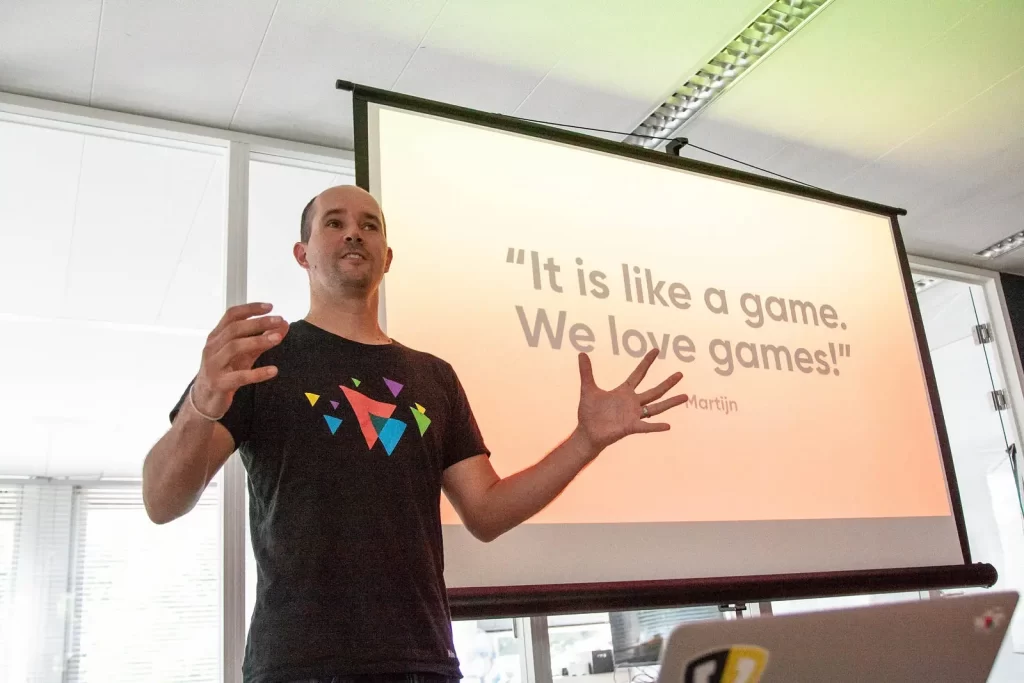Since Part 1 of this series a lot has happened. The biggest event was our adoption of the Holacracy constitution. My business partners and I signed the document the 7th of June with our colleagues as witness.

In this post I’d like to give you some insights about how we got started on this adventure. This is by no means a tutorial or a guide to self-management. Rather it is more of a timeline of my own explorations leading up to the decision to give Holacracy a serious try. If you are interested in self-management, then through this article you might pick up some useful tips on where to start.
Books that I read
When you start exploring alternatives for the conventional management hierarchies you will soon notice there are many flavours to choose from. A good start for me was reading some books on the topic.
- Cell philosophy, Eckart’s Notes
The first book I remember reading about organisational models was the classic Eckart’s Notes by Eckart Wintzen. Cell philosophy basically says bigger companies should split up after, give or take, 50 people into two cells. These cells then manage themselves. There are many different variations to self-managing cells and can also be applied to teams. What Eckhart explains in the book is still relevant to today’s world and certainly worth reading. - About Teal, Reinventing Organisations
The cell philosophy is also mentioned in the book Reinventing Organisations from Frederic Laloux (Here you find the English audiobook, the book is also on audible, however, only in French) This book I have just recently read and would highly recommend to someone who finds themselves interested in the topic. It gives a great overview of the history of organisations as well as a lot of practical examples of teal organisations. Of course Holacracy finds itself as an important topic within this book. - Holacracy by Brian Robertson
This book is best when you read it the second time, or rather after you’ve had some experience or understanding with Holacracy or other self-management models. Only then you fully understand the logic and power behind this method.

Podcasts and videos
- Autonomous spark teams at bol.com
This one is in Dutch. I think it’s absolutely great that larger organisations like bol.com are experimenting with Holacracy. In this podcast it is clearly explained why they went for self-management. If you find yourself on an hour plus car ride, just grab your airpods and start this podcast! - Watch a tactical meeting
Most people in traditional organisations would agree that their meetings suck. These meetings tend to be too frequent as well as having the tendency of dragging on and on ultimately leading to insufficient outcomes. One of the most visible powers of Holacracy is the strict process and facilitation of meetings. One of the meeting types within Holacracy is the Tactical Meeting. Tactical Meetings are focused on the operational work. You can watch several tactical meetings on Youtube. For example from Springest. This inspiring company is the first organisation in the Netherlands who adopted Holacracy in 2014. - Already into GTD?
Then you should watch David Allen making the connection with Holacracy. David clearly explains the relation between the two. He advices to first master Getting Things Done on a personal level and then start with Holacracy. Once the team is productive using the GTD framework, Holacracy is a great next step.
Meet people
- Have coffee
Just meet up with people who have been there. I went looking for similar companies like ours in the Netherlands. Preferably design agencies, who adopted self-management in the last few years. I quickly noticed that people were very willing to talk about their experiences. A lot of great conversations were had that brought about new insights. I strongly recommend that anyone out there interested in Holacracy should reach out to similar companies to have a chat. Hearing and seeing it first hand is the ultimate persuader. Bring your colleagues! I now know there is a list on HolacracyOne that you can sort by industry, country and organisation size. How useful! - The first company we talked to was Concept7. They are true early adopters and experimented with different organisation models. Another company visited was Valsplat, which I know quite well as we did some projects together. We also had great talks with Fronteer Strategy from Amsterdam, Coopr from Rotterdam and VEDS from Eindhoven.
- Holacracy tasters
You can go to a Holacracy Taster workshop every month. About 8 of my colleagues visited these tasters and were able to attain a strong grasp of the basics of Holacracy. These tasters are an easy and great way to fill up your afternoon that are also loads of fun! - Go on a safari
There are several companies you can visit to watch a tactical meeting. It is like a safari in the way that you watch people do their thing from a distance. It gives a great idea how efficient meetings can potentially be when performed by experienced practicioners. Of course there are opportunities to talk about what you witnessed with individuals from the company. In the Netherlands you can go to Visii or Springest. - Go to a meetup.
Of course there is a Holacracy Meetup group in your neighbourhood! Every few months you can go to a Meetup and talk to other people who are also interested in or have experience with Holacracy.

Insights
After reading, watching, listening and visiting all of the above, I was confident we, as Hike One, should take this step. There of course is more to it, but below you can read a short summary of what I find as the most important findings of my explorations.
- It is safe enough to try
I talked to many people with similar backgrounds, mindsets, and company cultures that started with Holacracy. None of these people expressed regret in adopting the new operating system. There were and will continue to be challenges, but overall outcomes have ranged from
positive to highly positive. It takes things to a next level. And if it does not work out, there is always a possibility to turn things back as to they were. - Know why you want this
People I spoke with all had their own reasons to start with Holacracy. Some did it because it boosted productivity, others did it because it involved more people in working on the purpose of the company. Other did it to make the company adapt to a fast changing world. Before you engage with Holacracy, have a clear reason for both yourself and the people you have to convince. - This does not solve all the challenges
Be aware that Holacracy does not solve all your problems. Holacracy doesn’t say anything about salaries, budgets, lack of time, difficult clients or company performance. You still need to find your own solutions. Holacracy does help to speed up the decision process. - Not everybody can handle it
People who worked in conventional management hierarchies for most of their working life might find the new operation system difficult to embrace. Building a career the traditional way is not so straight-forward in self-managing organisations. The whole status by function title has gone out the window. You cannot manage other people, but you are also not managed by anyone anymore. You have to manage yourself. - Get a coach
Almost everybody I spoke to advised us to get a coach. I understand now why. We have been experimenting with Holacracy right after reading the book. My god, how we failed right out of the gate to play by the rules! In the Netherlands there are a handfull of companies that advice on Holacracy. You’ll find them all here. We looked for a coach that had experience on different self-management models and could advice us on which would fit us best. We visited the Holacracy taster of the OrganziationBuilders. We felt there was a strong click and decided to plan a workshop with them. The goal was to select the best model and create an implementation plan. So we did!

If you like to share any advice for other people on where to start, be that books, videos or podcasts on the topic, please let me know by email or Twitter(@realhikeone). You can also comment on my LinkedIn status update.
To learn more about self-management, join a community of pioneers and check out our e-learning suite → Self-Management Accelerator
